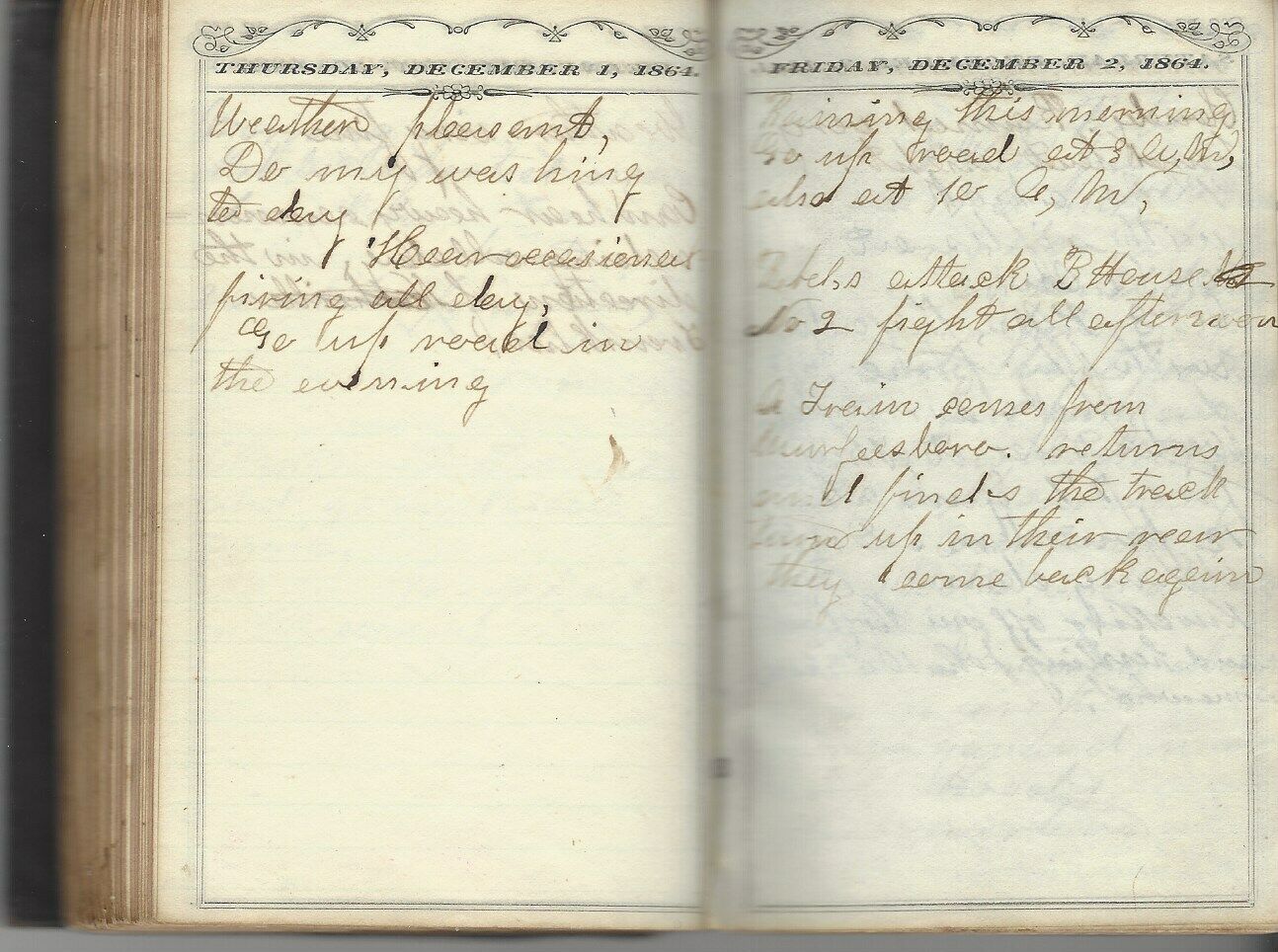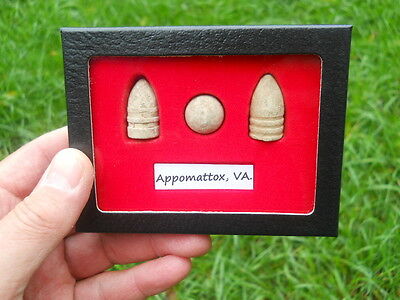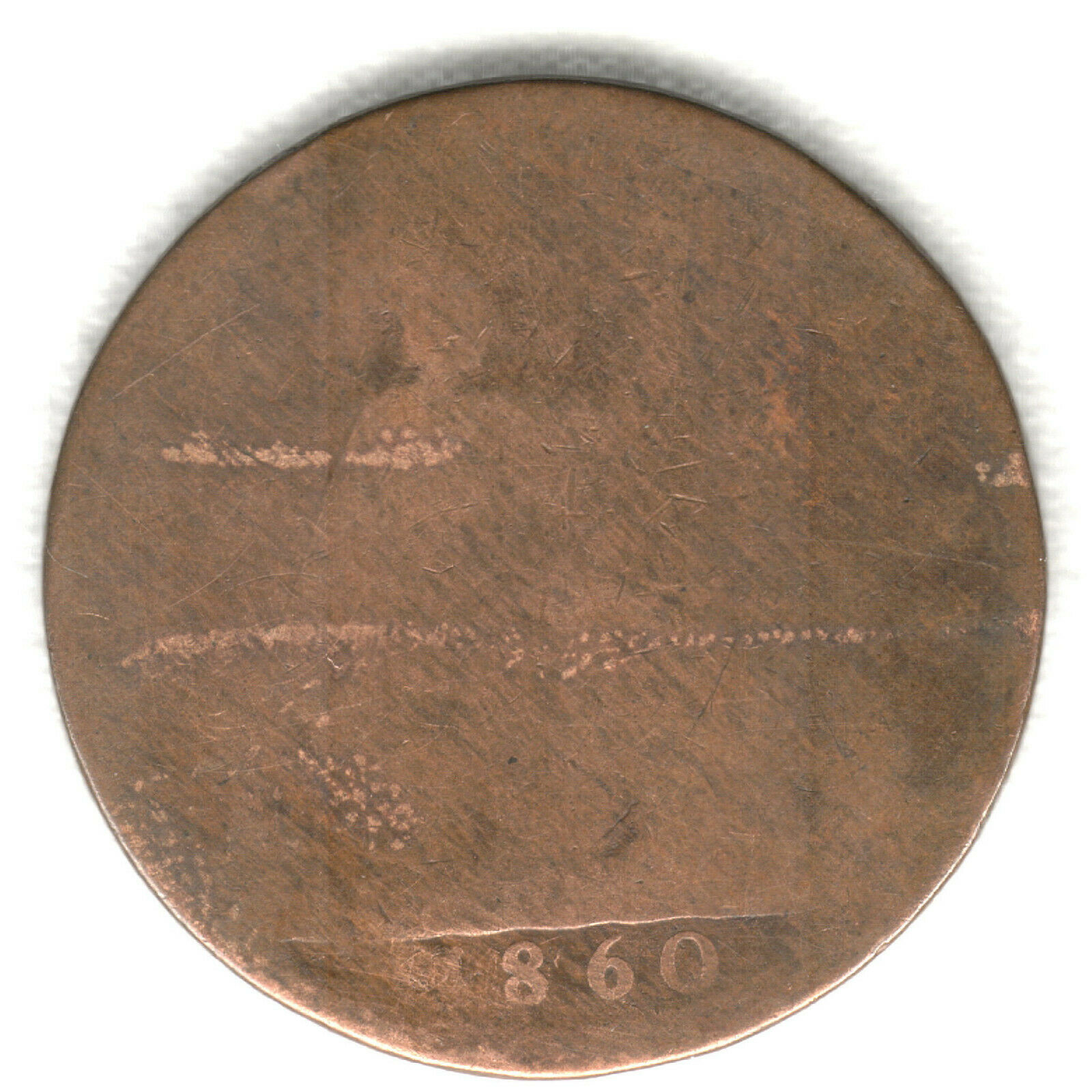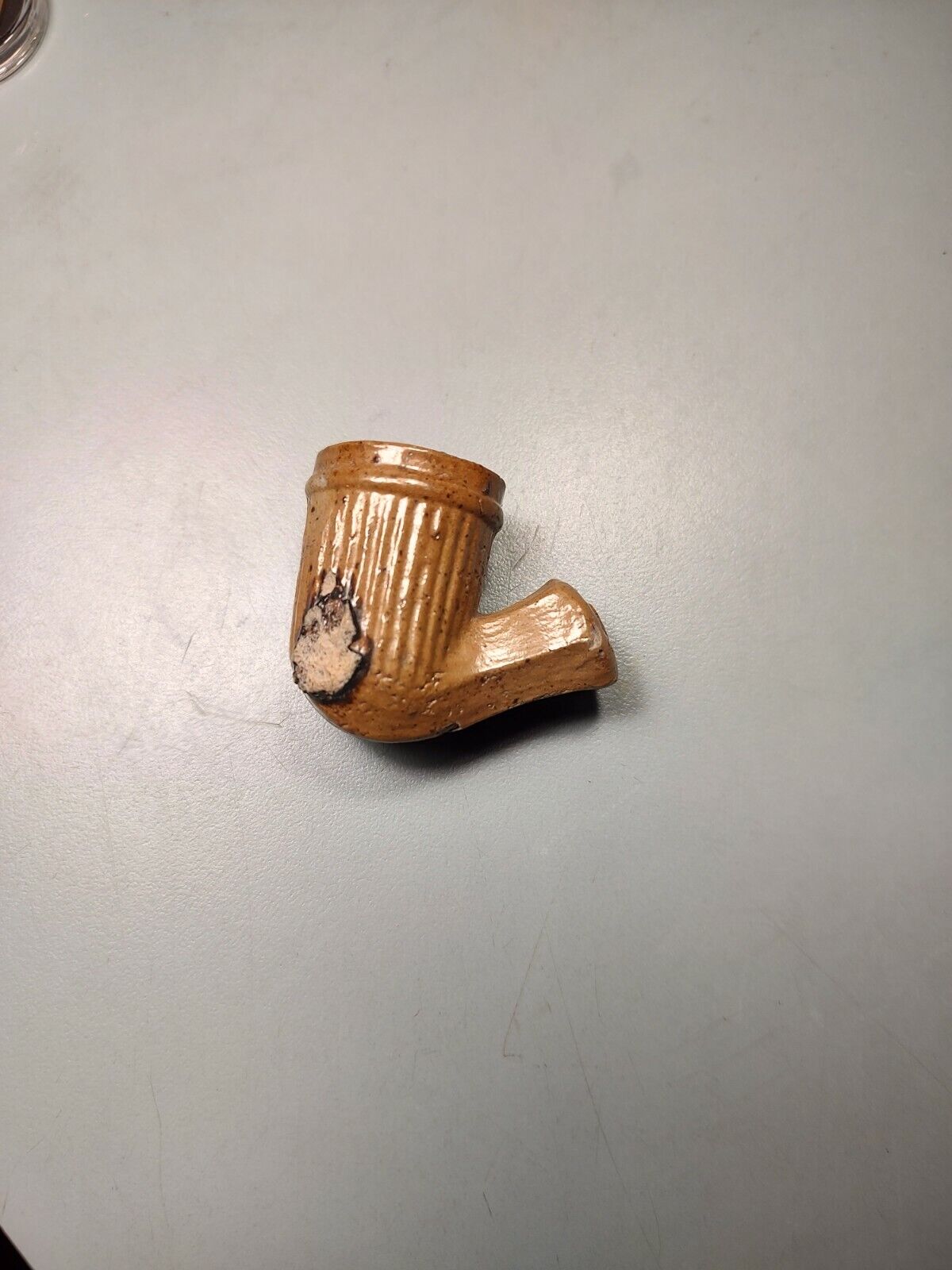-40%
Civil War Diary Details Forrest's Arrival, Capture By John Bell Hood's Forces
$ 1211.76
- Description
- Size Guide
Description
HARVEY HOGUE (1843 – 1914) of Cuyahoga Falls, Ohio, enlisted as a private on July 28, 1862, and mustered into Company G of the 115th
Ohio Volunteers in September. HDS records state that he was listed as a POW on December 5, 1864, in Antioch, TN, [so noted in his diary offered here]. The record also states that he escaped a Confederate prison in Cahaba, AL, but the date is unknown. He returned to his regiment on February 11, 1865. Hogue was promoted to Corporal on May 1, 1865 and was mustered out on June 22, 1865.
His one-year diary, 3 ¼ x 5, contains daily and often short entries from January 1, 1864 to December 31, 1864, with additional notes in “Memoranda” and “Cash Accounts” sections, including money he received from “barbering [cutting hair]” and a short entry about money spent in the “Southern Confederacy.” Hogue’s entries describe service primarily devoted to protecting Nashville and Chattanooga Railroad from Confederate forces and including references to Wheeler’s Raid of August 31, 1864, the Battle of Franklin and his description of captivity after surrendering to Confederate General John Bell Hood’s forces near Murfreesboro, TN.
Hogue’s entries often downplayed the severity of his situation both before and after his capture. In December 1864, after a 16-mile march with his captors through knee-deep mud and water, Hogue would sign off the day’s diary entry with his signature indicator of good health and spirits, “Feel bully.” He is a consistent diarist who records weather, drills, picket duty, foraging, correspondence, health matters and stories about other soldiers in the unit. He seems to have a particular dislike for Co. G’s own Capt. Deming N. Lowry, who Hogue describes as an “old tyrant” and an “arbitrary Brute.”
Hogue’s duty in early 1864 appears to have afforded him relative calm and safety with listings mostly about inspections, target practice, drilling, picket duty with occasional excitement: “30 men of Company G goes to Nashville to guard waggen train.” On March 18, he writes, “Reb shot last night trying to cross the picket line. Bull for the fellow that popped him.” On May 11, Hogue writes Sgt. Richmond was shot by a guerilla. Died last night...Taken to Nashville this evening to be sent home.”
But by the second half of the year, his regiment was increasingly under Confederate threat. Soldiers from the 115
th
not mounted were stationed at blockhouses near Murfreesboro in June 1864 and tasked with defending the Nashville and Chattanooga Railroad, a vital and singular supply line to General Sherman’s troops as they marched toward Atlanta.
Hogue notes this new assignment in his diary on June 4, and thereafter details the Confederate incursions threatening his regiment. He describes Gen. Joseph Wheeler's Confederate Cavalry raid on August 31, 1864, saying:
"...About 9AM a negro reports that Wheeler is coming and tareing up the track. Just after dinner some of the boys go up to the Fork [?] and find about 20 Johnys cutting the wire and destroying the track. They fire on them and they light out. At 9 PM they are fighting over on the pike! Fight nearly all night."
The fighting continues through September 1 when he reports
“At 11, they are driven out...have got a prisoner.”
On September 6 and 7, Hogue reports,
“The capture of Atlanta confirmed...The notorious John Morgan is dead.”
On September 13, Hogue writes,
“Reports that the rebs are coming, thirty thousand strong,”
later noting that the report was false. On September 25, 26, 28, 30, Hogue begins reporting evidence of Gen. Nathan Bedford Forrest as he led his force into northern Alabama and middle Tennessee to disrupt the supply of William Sherman’s army in Georgia. Hogue writes, “
Madame runner says [Gen. Nathan Bedford] Forrest is coming eight thousand strong. Trains stop running South...Forrest within 20 miles...Negroes lighting out...Forrest eyed over fences, have a fight...Forrest reported as having reinforced the Tennessee River.”
On October 9, Hogue reports that
“...Old Forrest has been captured.”
[This was merely a rumor.] There was a state election on October 11. “
Union voted 19, Copperheads 0
.” More significant was his report about votes being cast for Lincoln’s second term.
“Out of nineteen votes, eighteen polled for Lincoln and Johnson. Only one for McClellan and Pendleton. Bully for that.”
He notes hearing heavy cannonading all day during the Battle of Franklin on Nov 30, 1864.
Days later attacks on the blockhouses would begin. Hogue writes on December 2:
"Rebels attack Bhouse No.2 fight all afternoon."
Then on December 3 and 4th:
"Rebs attack us with rifles at 10AM. At 3PM they advance with flag of truce and demand a surrender. We don't see it. They fire 77 guns at us 12 perimeters... [Dec 4] Morning fine. Rebs resume their fire on us at 7AM. Fire 16 guns. We surrender at 12PM on conditions that any personal property be respected. After are [?] out. Our guns, blankets are taken. [The Confederates] kept our money then our overcoats. Hats, boots, almost everything.
“We march about 6 miles. Are put under guard near Gen. Hood's headquarters."
So begins Hogue's POW experience which he then documents daily through December 31. With as much detail as possible given the page per day format. Hogue describes daily marches and travel in rail cars through Tennessee, then Alabama, then Mississippi, while en route towards the infamous Andersonville prison camp. He notes the brutality and difficulty he experienced along the way, as on Dec 5:
"An Italian citizen shot about daylight to get the suit of good clothes he wore, was stripped and wrapped in an old dirty blanket and buried just beneath the Earth...."
On December 10, he writes
, “We still exist and that is about all. But I can live as long as there is any corn meal in the Confederacy.”
Then, on December 13:
"We draw three days additional rations, about enough for one meal."
Writing further about his life as a prisoner, he states,
“We resume our march soon after day light. March about 16 miles through mud and water about knee deep. Go into camp about six miles north of Lawrenceburg. Feel bully.”
On December 16,
“Feel first rate, only hungry as a bitch wolf or rather nearly starved to death.”
Facing very long miles-long marches through the South nearly every day, Hogue reports,
“Have to ford a river. A man gets drowned.”
On December 25,
“...We arrive at Meridian about 3 p.m., are put into the bull pen.” Later in December, he writes, “News pretty good from Gen’l Sherman if it can be relied upon...Reported that Old Abe has called for three hundred thousand more...A raiding party reported as having...destroyed the railroad, coming this way...Find plenty of grey backs...Our forces reported last night within fifty miles of this place...Reported to be exchanged...can’t see it in that light. Hope it so, though.”
Hogue would later escape, but the exact date is not known.
Closing his diary on December 31, 1864, Hogue reflects solemnly:
"Would like to be at old Cuya-Falls tonight. And will be there before many months or die making the attempt to get there."
Clearly, Hogue had already decided upon making his escape when the opportunity presented itself. The details of that escape attempt - the epilogue to this diary's fascinating story of captivity - were recorded in Hogue's war reminiscences published in the Highland, KS newspaper
The Vidette
in 1900. In the newspaper account Hogue details how he and two others from the 115th seized an opportunity in late January 1865 and jumped from a moving rail car.
Amazingly, after a harrowing weeks-long journey behind enemy lines, Hogue successfully evaded Confederates and arrived at the safety of a Union gun boat on the Tennessee River. According to Hogue later writings, enslaved people operating as part of the Underground Railroad brought him and his fellow soldiers to safety. Hogue recalls traveling by night, hiding in swamps and fields, river crossings, and more, all of which add to the significance of this diary which somehow survived to provide a living record of the early days of his captivity. Hogue's daring escape from the Confederates also saved him from the fate of so many other members of the 115th who, after parole from the infamous Andersonville prison, were killed aboard the
Sultana
on April 27, 1865.
Everything we sell is guaranteed authentic forever to the original buyer. We also offer a 30-day return policy. If you discover a problem or are dissatisfied with an item, please contact us immediately. Our goal is to please every customer. We are pleased to be members of The Manuscript Society, Universal Autograph Collectors Club, The Ephemera Society, the Southern New England Antiquarian Booksellers and the Preferred Autograph Dealers and Auction Houses. [CW 196]
[If you make an offer on an item, please send us a message through the Ebay System letting us know because the Make Offer is not working properly and we don't want to lose your sale.]












